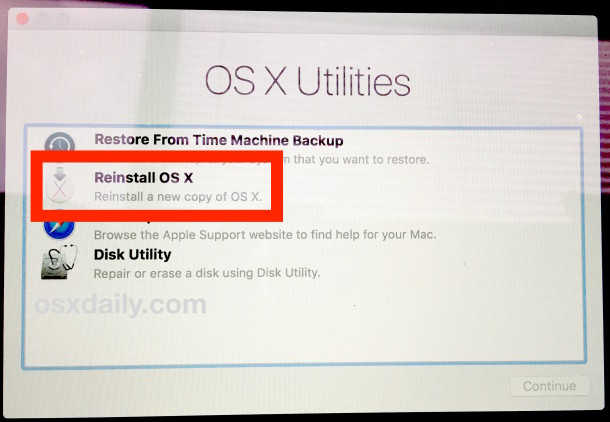Using this method your network drive will be connected and mounted for one time use, which means that it will disappear if you disconnect from network or simply reboot your Mac. First open Mac OS Finder app, that press Command and K buttons to launch Connect to Server window.
To use Time Machine to make a backup of your Mac, you need any of these types of storage devices:
Jul 02, 2020 Choose Mac OS Extended (Journaled) for any disk that you plan to use as a Time Machine backup disk or as a bootable installer. Will you be using the disk with another Mac? If the other Mac isn't using macOS High Sierra or later, choose Mac OS Extended (Journaled). Earlier versions of macOS don't work with APFS-formatted volumes. Sep 20, 2019 So you’re using Disk Utility to partition your new hard drive when you’re presented with a choice of potential file systems. The list is longer than you’d think, with terms like “APFS (Case-sensitive)” and “Mac OS Extended (Journaled, Encrypted)” to choose from. Mac OS Extended (Journaled) or HFS Plus is a file system developed by Apple Inc. With the release of the Mac OS X 10.2.2 update on November 11, 2002, Apple added optional journaling features to HFS Plus for improved data reliability. The formatting decides the way the files are stored on your hard disk. Jun 20, 2019 Format your APFS drive back to MacOS Extended Journaled(HFS+), FAT or ExFAT - macOS Secret Trick 2019. A common problem people facing is inability to reformat an APFS drive as something other than. Reformatting an apfs drive as mac os extended journaled.
- External drive connected to an AirPort Extreme Base Station (802.11ac) or AirPort Time Capsule
After setting up the storage device, you can use Time Machine to make a backup of your Mac. And after making your backup, you can use Time Machine to restore files from your backup.
External drive connected to your Mac
Time Machine can back up to an external drive connected to a USB, Thunderbolt, or FireWire port on your Mac.
External drive connected to an AirPort Extreme Base Station (802.11ac) or AirPort Time Capsule

Time Machine can back up to an external USB drive connected to an AirPort Extreme Base Station (802.11ac model) or AirPort Time Capsule.
- Make sure that the USB drive is formatted for Time Machine.
- Connect the drive to a USB port on your AirPort base station, then turn it on.
- Open AirPort Utility, then select your base station and click Edit to view its settings.
- Click the Disks tab in the settings window.
- Select your backup disk from the list of partitions, then select ”Enable file sharing”:
- If more than one user on your network will back up to this disk with Time Machine, you can use the Secure Shared Disks pop-up menu to make sure that they can view only their own backups, not yours. Choose ”With accounts” from the menu, then click the Add (+) button to add users.
- Click Update to restart your base station and apply the settings.
AirPort Time Capsule
Time Machine can back up to the built-in hard disk of an AirPort Time Capsule on your network.
Mac shared as a Time Machine backup destination
To use another Mac on your network as a Time Machine backup destination, complete these steps on the other Mac:
- Choose Apple menu > System Preferences, then click Sharing.
- From the list of services on the left, select File Sharing.
- From the list of Shared Folders on the right, Control-click the folder that you want to use for Time Machine backups.
- From the shortcut menu that opens, choose Advanced Options.
- From the Advanced Options dialog, select ”Share as a Time Machine backup destination.”
When setting up Time Machine on your other Mac computers, you should now be able to select the shared folder as a backup disk.
Network-attached storage (NAS) device that supports Time Machine over SMB
Many third-party NAS devices support Time Machine over SMB. For details, check the documentation for your NAS device.
How to format a disk for Time Machine
Can pc read mac os extended drive. Time Machine supports all Mac OS Extended (Journaled) formats and Xsan formats. If the disk isn't using the correct format, Time Machine automatically prompts you to erase it when you connect it to your Mac:
If you need to erase the disk manually, use the Disk Utility app to erase using the Mac OS Extended (Journaled) format.
Time Machine can't back up to an iOS device or disk formatted for Windows. And if your disk uses the Master Boot Record (MBR) partition scheme, some of its partitions might not be available for use with Time Machine.
I have found the apparent source of the problem. Seemingly, having “Enable Power Nap” selected in the Energy Saver settings was forcing the network drives to dismount. I disabled that setting two days ago, and the network backups have properly worked the past two nights; the network drives also remain mounted as I can see when I come into the office in the morning. This behavior is counterintuitive given that the entire point of a Power Nap is to permit the computer to perform network based operations as per Apple’s own words:
“While sleeping, your Mac can back ip using Time Machine and periodically check for new email, calendar, and other iCloud updates”
Mac os 9 sony handycam driver apple discussions.
Yet, this very same feature causes network drives to dismount once the Mac goes to sleep. 😕 As I stated in the original post, this appears to be a longstanding problem that needs to be corrected in macOS, as many Mac users, particularly those in work environments, need to connect to servers, NAS, etc. that are not set up with Mac-centric protocols.
Mount Drive Mac Os
Feb 2, 2017 3:37 AM